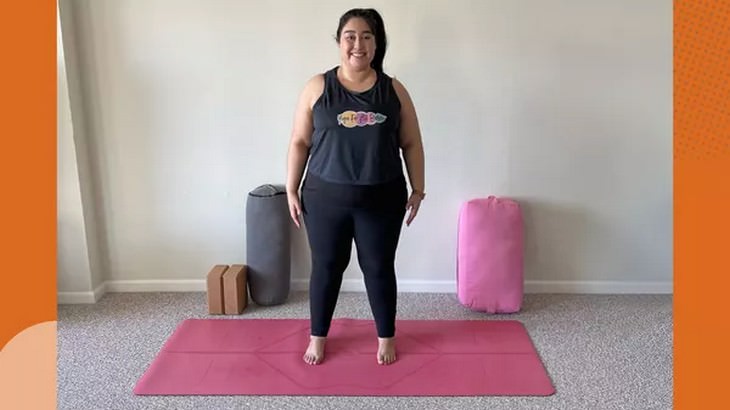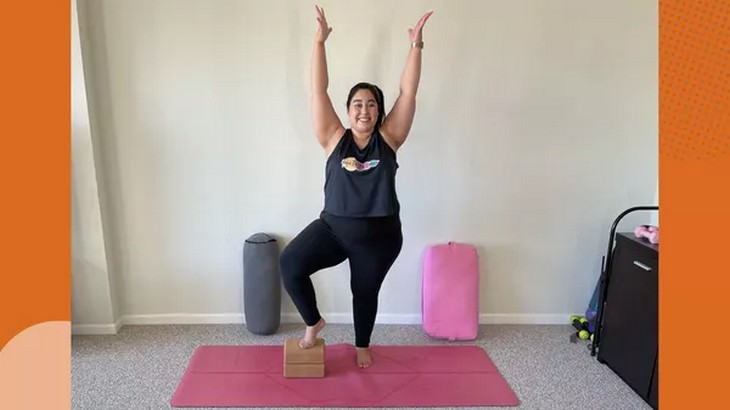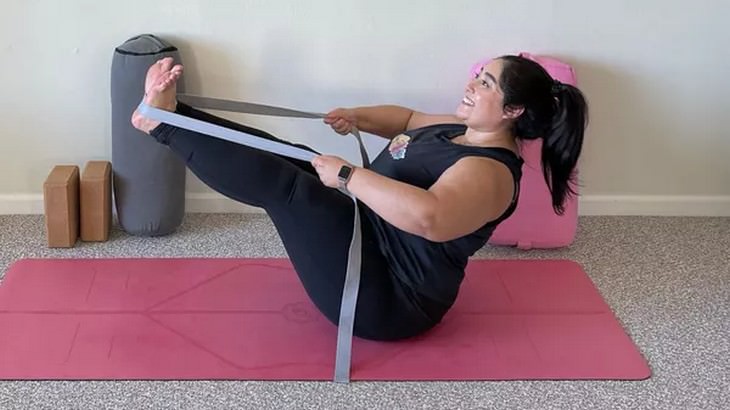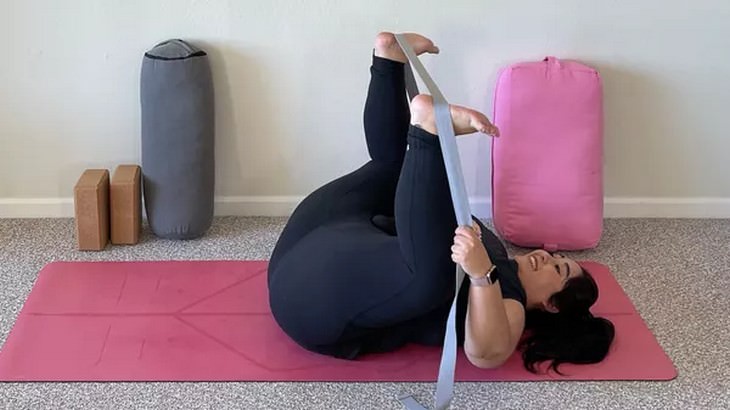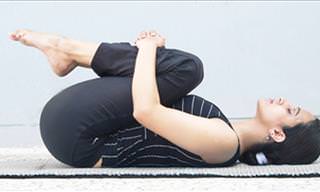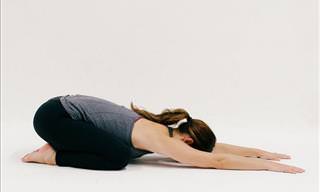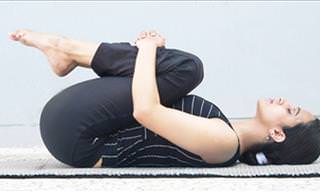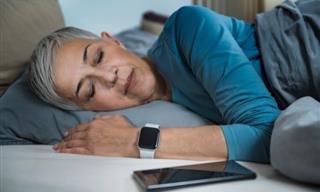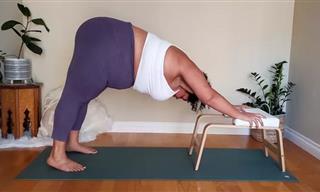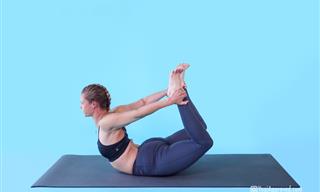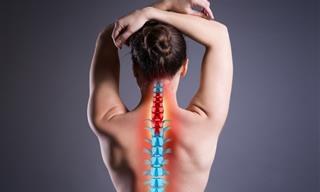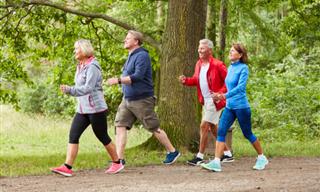In yoga class we are sometimes tempted to squint to the sides to examine the poses of the people around us and compare them to our own - but an important rule in yoga and sports, in general, is that different bodies do not necessarily move in the same way and are sometimes not endowed with the same abilities. Unfortunately, some yoga instructors don't take this into account and tend not to diversify the exercises they present and suggest performing, which makes it difficult for some gymnasts who have large body dimensions to perform the movements correctly or without harming their bodies.
Therefore, we've decided to collect 10 common yoga poses and exercises that can be easily performed regardless of body type, in an efficient and comfortable way. Perform each position and exercise according to the level of fitness and desired training duration, or use these versions instead of similar exercises in different training sets.
1. Child Pose with a blanket or pillow
How does it contribute? The use of a blanket or pillow is particularly effective in relieving knee pain, and may be useful for you in many yoga exercises that require you to place your knees or elbows on the ground. In this way, you provide your joints with a soft and padded surface that adds to the feeling of comfort.
A. Spread a blanket or place a small pillow on the ground and place your knees on it.
B. Bend the pelvis back (towards the ground) in a comfortable and not too pressing position.
C. Bend your upper body forward, reach your hands and place them on the ground above your head.
D. Stay in this position and breathe deeply.
2. Down Dog position

How does it contribute? Dog pose is a very common exercise and you may come across it in almost any yoga class. In the original movement, the hands should be on the ground, but this exercise will make your body a little easier and will allow you to achieve the same results with the support of a chair or pedestal that will reduce the pressure exerted on your joints.
A. Stand, carefully bend your upper body and lean on a chair or pedestal with your palms.
B. Straighten your arms as much as possible and lower your chest to the height of your shoulders.
C. Keep your pelvis lifted and heels parallel to the ground.
D. Stay in this position and breathe deeply.
3. High Plank pose
How does it contribute? Just like the previous exercise, leaning on a flat and stable surface makes it significantly easier on your joints and limbs. Also, the reduction of body tilt as required for a classic plank exercise puts less pressure on the center of the body and prevents lower back pain.
A. Place your hands shoulder-width apart and lean on a stable object such as a chair, large table or bed.
B. Take a few steps back, while still holding onto the stable surface, and place your feet a reasonable distance apart when they are straight and stable - in fact, you should form a straight line stretching from your heels to your head.
C. Stay in this position and breathe deeply.
4. Wide-Stance Mountain pose
The original mountain exercise involves standing with feet close together, but this may not be suitable for everyone as it can cause balance issues or knee friction. To address this, the steps below detail a modified position that provides a more stable base by moving the legs apart.
A. Begin by standing with your hands at or above shoulder level and contracting your leg and upper body muscles. B. Turn your palms inward and let your arms rest at your sides.
C. Keep a stable posture and breathe deeply as you turn your shoulders back.
D. Repeat step C, but this time turn your shoulders forward.
5. Tree Pose with leg support
What is the benefit of the modified tree stand exercise? The original exercise requires folding your leg at a 90-degree angle and pressing it to the side of the corresponding knee, whereas the modified version allows for a wider and more comfortable leg placement for better balance and reduced tripping risk. To perform the modified exercise, use a stable box or small stool as support for your leg, shift your weight to one side, lift the opposite leg and place it on the support, raise your hands above your head, and maintain stability while taking deep breaths.
6. Low Lunge with support

How does it help? The low squat with support involves placing your hands on small objects instead of the floor to ease pressure on the abdominal and chest muscles.
A. Bend your right knee back and place it on the ground, with two small objects placed side by side in front of you, near the left leg.
B. When you feel stable and relaxed, raise your hands up and straighten them.
C. Stay in this position for a few seconds and breathe deeply, then lower your hands in a slow, purposeful motion to the objects in front of you.
D. Repeat the movement several times, making sure to be stable and take deep breaths.
7. Boat Pose with straps
How does it help? The use of flexible bands or resistance bands makes the exercise much more accessible for some people because when you wrap your feet in a band and hold it on the other side, it acts as an "extension" for your hands.
A. Sit on the floor and wrap an elastic band or resistance band around the arches of your feet.
B. Contract your core muscles and lift your legs off the ground at a 45-degree angle while holding the band and with your knees slightly bent.
C. Stay in this position and make sure to breathe deeply.
8. Half Moon pose with support
How does it contribute? The pose involves using a tall item such as a stool or bottle to bring the floor closer and prevent losing balance while putting pressure on many muscles in the body.
A. To perform this position, place a small object on the ground to the left.
B. Bend your upper body towards it while lifting the right leg to the side in a T shape. You can raise your right hand if you feel stable.
C. Repeat on the other side.
9. The Happy Baby Pose with straps
How does it contribute? As in the boat exercise (number 7), here too the straps serve as an "extension" for your hands. The strap helps you get as close to your feet as possible, so you don't have to strain your shoulders too much or arch your spine to practice this yoga pose.
A. Lie on your back and wrap an elastic band or resistance band around the arches of your feet.
B. Raise your legs towards the ceiling, with your knees extended and bent towards your shoulders.
C. Gently and carefully pull the strap, and be sure to hold a point as close as possible to the feet.
D. Stay in this position for a few seconds and breathe deeply.
10. Forward leaning while sitting
How does it contribute? In this exercise, the yoga instructors usually ask to keep your legs close together and stretched forward. But performing the exercise in spreading your legs in a V position allows you to free up space for your body and also slightly improves the flexibility of the pelvis.
A. Sit on the ground with your legs spread out in a V shape.
B. Puff up your chest and gradually lean your upper body forward towards the ground. Make sure you are comfortable in the position.
C. It is important to take deep breaths while holding this position for a few seconds
Photos source: Livestrong
 Go to BabaMail
Go to BabaMail





